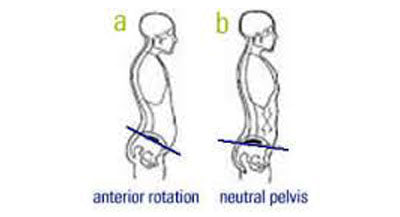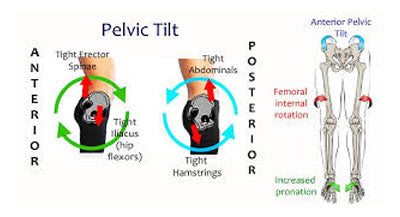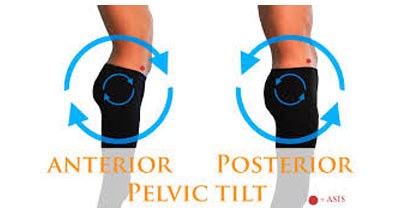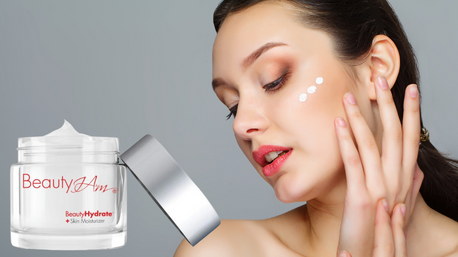STAY AHEAD OF THE CURVE AND ELIMINATE BELLY BULGE: AVOIDING ANTERIOR PELVIC TILT
STAY AHEAD OF THE CURVE AND ELIMINATE BELLY BULGE: AVOIDING ANTERIOR PELVIC TILT
Having a tight, lean midsection is the visual marker of a clean, balanced nutritional regime and focused, consistent workouts that are built on the right levels of intensity and proper form and technique. Unfortunately, even after the best efforts in exercise and nutrition have been given, some women can’t seem to get rid of a lower bulge in their abdomen, also commonly referred to as their “pooch” or little “puppy belly.”
So what is the deal with this? It seems a bit unfair to give it all you’ve got, and still feel and/or see this visual “bulging.” The good news is, it’s actually a super common postural dysfunction referred to as Anterior Pelvic Tilt that can be greatly improved and/or eliminated with the proper strengthening and stretching exercises.
ANTERIOR PELVIC TILT (APT)

Okay, so a quick checklist you can run to help determine if you may be dealing with this includes an excessive curvature in your lower back with a forward tipped pelvis and then the dreaded bulge in the lower abdomen, which is not necessarily excess fat. This condition can lead to lower back pain and injury, increased risk of knee pain and poor exercise technique, so it’s important to include some remedies for this into your daily regime.
WEAK/LENGTHENED MUSCLES FROM APT

Typically, the hip flexors are extremely tight coupled with the rectus femoris (quads), the glutes and abdominals need to be strengthened, and the hamstrings are in a lengthened state.
DOMINANT/STIFF MUSCLES FROM APT

The erector spinae or lower back and quads are usually dominant during movement patterns and often times stiff, which creates compensation patterns such as reciprocal inhibition, which is when muscles on one side of joint relax to allow the other side of the joint to contract and can cause some of the issues such as knee pain and back, along with improper biomechanical movements.
YOUR PRESCRIPTIVE ROUTINE
Lengthen Your Hip Flexors: you can perform a lunge stretch, also known as the runner’s stretch, focusing on squeezing and activating the glutes on the leg that is behind you. You can also foam roll your hip flexors by placing the outer end of the roller near your groin area, in a prone position, and rolling to release tension. Performing clams, laying on your back will help as well, and you can include a thera-band below your knees for added tension.
Activate/Strengthen Glutes & Abdominals: you can perform glute bridges, quadruped hip extensions, cable pull-throughs, and RKC planks. Other common abdominal exercises such as bird dogs can be included here as well.
Lower Back Stretches: Cat and camel stretches are great for the lower back, threading the needle stretch will help to loosen the muscles of the lower back and IT band, along with foam rolling the IT band as well and are all important inclusions to daily routine.
Compound Movement Patterns: when performing deadlifts and squats, it’s important to keep a “proud chest” which simply means to keep your chest high and elevated to avoid excessive arching in the lower back. When performing pressing movements overhead, squeezing the glutes and focusing on keeping the pelvis posteriorly tilted is key.
CONSIDERATIONS
Reducing and/or eliminating inflammation in the body will also help with conditions such as this, and a healthy joint supplement should be a part of your daily regime, as it will help to accomplish the following: increased mobility, joint strength and flexibility, healthy formation of cartilage and a healthy balance of synovial fluid. Make sure to check out BeautyFlex by BeautyFit, which will help both the serious athlete and fitness enthusiast to protect their bodies from both intense training and daily wear and tear, while helping to facilitate the improvement of various bodily compensation issues while improving overall movement patterns.
ATTENTION
Make sure to consult with your doctor before beginning any new supplemental or exercise regime.
Yours in health and fitness,




Leave a comment